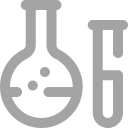
Product Description
Telmisartan is a potent, long lasting antagonist of angiotensin II type 1 receptor (AT1), selectively inhibiting the binding of 125I-AngII to AT1 receptors with IC50 of 9.2 nM.
IC50 & Target: IC50: 9.2 nM (angiotensin II type 1 receptor)[1]
In Vitro: In intact RVSMC cells and in membrane preparations, telmisartan inhibits the binding of 125I-AngII to AT1 receptors in a concentration-dependent manner, with an IC50 of 9.2 ± 0.8 nM. In the same experimental conditions, angiotensin II displaces 125I-AngII with an IC50 value of 2.9 ± 0.5 nM. The specific binding of [3H]telmisartan to SMC membranes is displaced by unlabeled telmisartan with an IC50 of 7.7 ± 1.8 nM and by cold AngII with an IC50 of 32.7 ± 5.7 nM [1]. Telmisartan treatment (100 μM) reduces the proliferation of three EAC cell lines (OE19, OE33, and SKGT-4), induces cell cycle arrest in G0/G1 phase and regulates cell cycle-related proteins in EAC cells, and induces the phosphorylation of AMPK and regulates cell cycle-related proteins via the AMPK/mTOR pathway in EAC cells. Telmisartan inhibits the activation of RTKs, downstream effectors and cell cycle-related proteins[5].
In Vivo: In the telmisartan (0.1, 0.3, and 1 mg/kg)-treated rats, the specific binding of [3H]telmisartan to the surface of living RVSMC is saturable and increases quickly to reach equilibrium within 1 h. Telmisartan dissociates very slowly from the receptor with a dissociation half-life (t1/2) of 75 min, which is comparable with candesartan and almost 5 times slower than angiotensin II (AngII). In vivo, telmisartan blunts the blood pressure response to exogenous AngII dose dependently[1]. Telmisartan (10 mg/kg/d) administration effectively suppresses aneurysm pathogenesis after PPE infusion as well, regardless of whether treatment is initiated before or after aneurysm creation or continues for a limited or extended time. Telmisartan treatment is associated with reduced messenger RNA levels for CCL5 and matrix metalloproteinases 2 and 9 in aneurysmal aortae, with no apparent effect on PPARγ-regulated gene expression[2]. Telmisartan (1 mg/kg/day) significantly ameliorates neuronal loss and the spatial acquisition impairment in 5XFAD mice, but without any changes of NeuN expression in the hippocampus layer. Telmisartan (1 mg/kg/day) treatment reduces amyloid burden and microglial accumulation in 5XFAD mice brain, induces microglial polarization towards neuroprotective phenotype, but does not alter the expression levels of NEP and IDE in 5XFAD mice specific brain areas[3]. Telmisartan (0.05, 0.1, 1 mg/kg, p.o.) shows significant reduction in immobility time, antagonizes depression and anxiety, and also significantly attenuates serum cortisol, NO, IL-6 and IL-1β in rats[4]. Telmisartan (50 μg, i.p.) leads to a 73.2% reduction in tumor growth in mice bearing xenografts derived from OE19 cells. Furthermore, miRNA expression is significantly altered by telmisartan in vivo[5].

Information
CAS No144701-48-4
FormulaC33H30N4O2
Clinical Informationclinicalinformation
PathwayAutophagy
GPCR/G Protein
TargetAutophagy
Angiotensin Receptor

Specifications
Purity / Grade>98%
SolubilityH2O : < 0.1 mg/mL (insoluble); DMSO : 6.67 mg/mL (12.96 mM; Need ultrasonic)
Smilessmiles

Misc Information
Alternative NamesBIBR 277
Observed Molecular Weight514.62